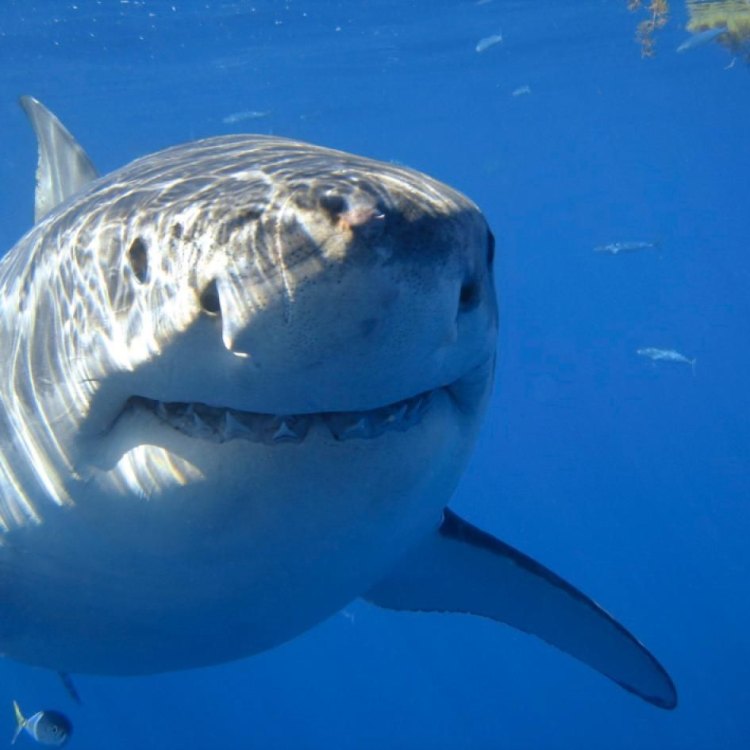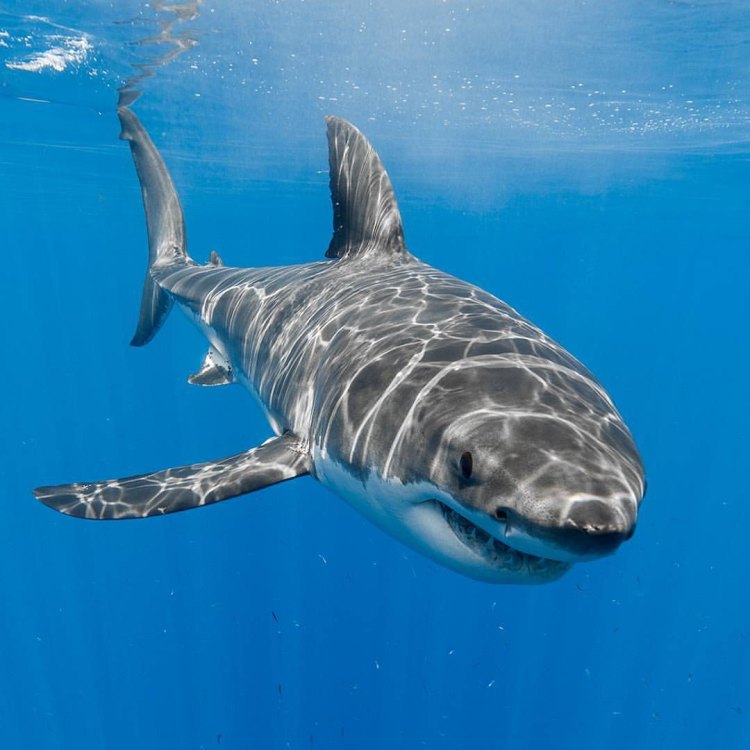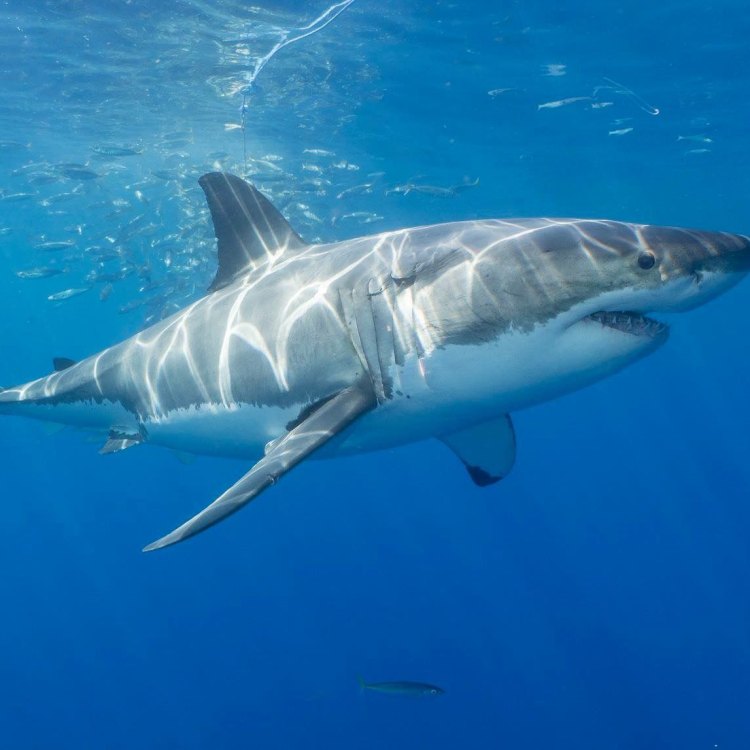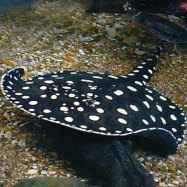
Great White Shark
Up to 6.4 meters (21 feet)
The Great White Shark is a powerful predator found in the world's oceans. With a category of Animals G, they can reach up to 6.4 meters (21 feet) in length. As part of the Lamnidae family, they have a streamlined and torpedo-shaped body that helps them swim at high speeds. Be on the lookout for this magnificent creature during your next ocean adventure!
Animal Details Summary:
Common Name: Great White Shark
Kingdom: Animalia
Habitat: Marine
The Great White Shark: A Fearsome and Fascinating Predator of the Ocean
With its sleek, torpedo-shaped body and piercing black eyes, the Great White Shark (Carcharodon carcharias) is one of the most iconic and feared predators of the ocean. This incredible species, also known as the "White Pointer" in Australia and "White Shark" in South Africa, is a member of the Lamnidae family and can be found in coastal and offshore waters all around the world. Its powerful jaws, razor-sharp teeth, and unmatched predatory skills have earned it a reputation as one of the oceans' most fearsome hunters. In this article, we will delve deeper into the world of the Great White Shark, exploring its unique characteristics, behavior, and why it holds such a fascination for people all over the world Great White Shark.A Majestic Predator with an Ancient Lineage
The Great White Shark belongs to the kingdom Animalia, phylum Chordata, and class Chondrichthyes, making it a distant relative of animals like dolphins, whales, and seals. This powerful predator belongs to the Lamniformes order, which includes other large sharks such as the Mako shark and the Porbeagle shark. However, what sets the Great White Shark apart is its unique evolutionary history, which can be traced back more than 400 million years ago. The species itself has been on earth for over 16 million years, making it one of the oldest and most successful predators on the planet.A Global Citizen of the Ocean
One of the most fascinating aspects of the Great White Shark is its wide geographical distribution. This apex predator can be found in all the world's major oceans, from the coasts of California and Mexico to the shores of South Africa, Australia, and even as far as Japan and New Zealand. However, although this majestic creature is a global citizen, it tends to prefer temperate and subtropical waters, explaining its absence from polar regions. It is also not uncommon to find Great White Sharks in deep waters or close to shore, making them a versatile and adaptable species.The Perfectly Adapted Hunter
The Great White Shark may not be the largest shark in the ocean, but it is undoubtedly one of the most efficient predators German Longhaired Pointer. Its body shape is specifically designed for speed and agility, making it one of the ocean's fastest-swimming sharks. With streamlining and a torpedo-like shape, the Great White Shark can easily reach speeds of up to 35 miles per hour. Its body is also covered in dermal denticles, or small tooth-like scales, which allow it to reduce drag and move effortlessly through the water.A Coloration that Blends In
One of the most distinctive features of the Great White Shark's appearance is its greyish-blue dorsal side and white ventral side. This coloration is known as countershading, and it serves as a camouflaging technique against its prey. When viewed from above, the Great White Shark's dark upper side blends in with the dark depths of the ocean, making it difficult to spot. Similarly, when viewed from below, its white underside blends in with the bright surface of the water, making it challenging to see from all angles.A Carnivorous Diet
The Great White Shark is a renowned carnivore, with a reputation for being one of the sea's most fearsome hunters. Its diet is diverse, consisting mainly of fish such as tuna, mackerel, and herring. It also feeds on other marine mammals such as sea lions, seals, and other sharks. However, the Great White Shark's preferred prey is the seal. These agile and fast-moving mammals are a challenge for most predators, but the Great White Shark's unique hunting tactics make it the perfect seal hunter.The Art of Ambush Hunting
The Great White Shark is a master of ambush hunting, using its speed and stealth to sneak up on its prey from below. Its streamlined body allows it to move quickly and quietly through the water, making it difficult for its prey to detect its presence. Once within striking distance, the Great White Shark will propel itself upwards and breach the surface, often catching its prey off guard and delivering a fatal bite with its powerful jaws and serrated teeth that can measure up to 3 inches long.A Long Life Span and Slow Reproduction
Despite being a formidable predator, the Great White Shark faces several challenges in the wild. One of the main threats to its survival is its slow reproductive rate, with females only reaching sexual maturity at around 15 years old. Once pregnant, females carry their young for around 11 months, giving birth to litters of 2-10 pups. This slow reproductive process, coupled with the increasing demand for shark fins and overfishing, has resulted in a decline in the Great White Shark's population, making it a vulnerable species.A Worldwide Fascination with the Great White Shark
From books and movies to documentaries and news articles, the Great White Shark has long held a fascination for people all around the world. Its unique characteristics, predatory skills, and fearsome reputation have sparked ongoing debates and research into the species' behavior and biology. There is even a dedicated week called "Shark Week" on the Discovery Channel, highlighting and celebrating these incredible creatures.A Threatened Species
Despite its enduring popularity and representation in the media, the Great White Shark is a vulnerable species that faces increasing threats to its survival. While shark attacks on humans may make headlines, they are relatively rare, with an average of only five fatalities worldwide each year. On the other hand, humans kill an estimated 100 million sharks every year, mainly to meet the demand for shark fins, which are considered a delicacy in some cultures. Other pressures facing the Great White Shark include habitat loss, pollution, and climate change, making conservation efforts critical for its survival.The Need for Conservation
To protect and preserve the Great White Shark, global conservation efforts are taking place. These include stricter fishing regulations and bans on shark finning, as well as exploring alternative sources for shark fin-based products. Scientists and researchers are also studying the species' behavior and biology to better understand its ecological role within the ocean's delicate ecosystem. It is also essential for individuals to educate themselves on the importance of this apex predator and its role in keeping the ocean's ecosystem in balance.In Conclusion
The Great White Shark is, without a doubt, one of the most fascinating and iconic creatures in the ocean. Its sleek and powerful body, unique hunting tactics, and global appeal have made it a symbol of the oceans' vast and mysterious depths. However, this majestic predator also faces numerous threats to its survival, making it critical for us to understand and protect this incredible species before it's too late. By conserving the Great White Shark and its habitat, we can ensure that this apex predator continues to reign over the ocean for many years to come.

Great White Shark
Animal Details Great White Shark - Scientific Name: Carcharodon carcharias
- Category: Animals G
- Scientific Name: Carcharodon carcharias
- Common Name: Great White Shark
- Kingdom: Animalia
- Phylum: Chordata
- Class: Chondrichthyes
- Order: Lamniformes
- Family: Lamnidae
- Habitat: Marine
- Feeding Method: Carnivore
- Geographical Distribution: Coastal and offshore waters worldwide
- Country of Origin: Global
- Location: Oceans
- Animal Coloration: Greyish-blue on the dorsal side and white on the ventral side
- Body Shape: Streamlined and torpedo-shaped
- Length: Up to 6.4 meters (21 feet)

Great White Shark
- Adult Size: Up to 6.4 meters (21 feet)
- Average Lifespan: Up to 70 years
- Reproduction: Sexual
- Reproductive Behavior: Viviparous
- Sound or Call: Not known for producing vocalizations
- Migration Pattern: Seasonal migrations
- Social Groups: Solitary
- Behavior: Apex predator, known for its curiosity and intelligence
- Threats: Overfishing, bycatch, habitat destruction, and hunting
- Conservation Status: Vulnerable (IUCN 3.1)
- Impact on Ecosystem: Important role in maintaining balance in marine food webs
- Human Use: Fishing (both targeted and incidental catch), ecotourism
- Distinctive Features: Massive size, large triangular teeth, and powerful jaws
- Interesting Facts: Great white sharks can detect electromagnetic fields given off by living organisms, allowing them to locate their prey.
- Predator:

Carcharodon carcharias
The Fascinating World of Great White Sharks: Apex Predator and Vital Ecosystem Balancer
The ocean, with its vast and mysterious depths, is home to some of the most fascinating creatures on Earth. Among them, the great white shark stands out as one of the most iconic and feared predators. With its massive size, powerful jaws, and sharp triangular teeth, this apex predator has captured the imagination of humans for centuries.But beyond its undeniable ferocity, the great white shark plays a crucial role in maintaining the balance of marine ecosystems PeaceOfAnimals.Com. In this article, we will explore the unique features and behaviors of this magnificent creature, its impact on the environment, and the threats it faces.
Adult Size and Lifespan:
Great white sharks, scientifically known as Carcharodon carcharias, can grow up to 6.4 meters (21 feet) in length and weigh over 2,000 kilograms (4,500 pounds). These massive creatures can live up to 70 years, making them one of the longest-living cartilaginous fish species in the world.
Reproduction and Reproductive Behavior:
Like most sharks, great whites have a sexual mode of reproduction. They are viviparous, which means the females give birth to live young. They can have up to 10 pups per litter, and the gestation period can last between 12 and 18 months.
Interestingly, female great white sharks have a unique reproductive strategy called "intrauterine cannibalism." This phenomenon occurs when the embryo inside the mother's body consumes its siblings, ensuring that only the strongest and fittest offspring survive Goliath Grouper.
Sound or Call:
Despite their reputation as fierce predators, great white sharks are not known for producing vocalizations. They do not possess vocal cords like other animals, and scientists have not observed them producing any sounds.
Migration Pattern and Social Groups:
Great white sharks are solitary creatures, and their migration patterns vary depending on food availability and water temperature. They follow a seasonal migration pattern, traveling to cooler waters in the summer and warmer waters in the winter.
Some studies suggest that great white sharks may form temporary social groups when feeding on large prey, but overall, they are solitary animals.
Behavior and Predatory Tactics:
The great white shark is an apex predator, which means it is at the top of the food chain in its marine ecosystem. As such, it has a critical role in maintaining the balance of the food web.
These majestic creatures are known for their exceptional intelligence and curiosity. They use their excellent eyesight and sense of smell to locate their prey, which includes fish, seals, sea lions, and other marine mammals. Great white sharks are also known to scavenge on dead or dying animals, making them scavengers in addition to being fierce hunters.
One of their unique predatory tactics is the "spy-hop," where they lift their heads out of the water to observe their surroundings and potential prey. They also use their massive bodies and powerful jaws to stun their prey before consuming it.
Threats and Conservation Status:
Unfortunately, great white sharks face a variety of threats from human activities. The most significant threat is overfishing, mainly due to the high demand for their fins, which are considered a delicacy in some countries. They are also hunted for their meat, liver, and other body parts, which are used for traditional medicine.
Bycatch, which is the unintentional capture of sharks in fishing gear, is another major threat. Great white sharks are often caught as bycatch in commercial and recreational fisheries, and their slow reproductive rate makes it challenging for their populations to recover from this accidental capture.
Habitat destruction, mainly through pollution and coastal development, is another significant threat to great white sharks. These apex predators play a crucial role in maintaining the balance of marine ecosystems, and their decline can have severe consequences on the entire food web.
According to the International Union for Conservation of Nature (IUCN), great white sharks are classified as "Vulnerable" on the Red List, with decreasing populations worldwide.
Impact on Ecosystems:
Great white sharks have a vital role in balancing marine ecosystems. As apex predators, they keep the population of their prey species in check, preventing them from overgrazing on plant life. This, in turn, helps maintain healthy and diverse marine ecosystems.
Moreover, their feeding habits also benefit other marine organisms. When a great white shark feeds on a large prey item, such as a seal, it typically only consumes the fattiest parts. The rest of the carcass sinks to the ocean floor, providing food for scavengers and helping to recycle nutrients back into the ecosystem.
Human Use and Interesting Facts:
Great white sharks have captured the human imagination for centuries and have been the subject of many myths and legends. They have also been portrayed in numerous popular media, such as movies and documentaries.
However, they also have practical uses for humans. Great white sharks are apex predators and help keep fish populations in balance, making them crucial for maintaining healthy marine ecosystems. They are also a popular attraction for ecotourism, generating significant income for local economies.
Furthermore, great white sharks have some fascinating features that make them stand out. They have a highly sensitive sense of smell that allows them to detect even a drop of blood in millions of liters of water. They can also detect electromagnetic fields given off by living organisms, allowing them to locate their prey with incredible accuracy.
Conclusion:
The great white shark is undoubtedly a remarkable creature. Its massive size, sharp teeth, and curious behavior have sparked fear and fascination in humans for centuries. However, beyond its ferocious exterior, the great white shark plays a crucial role in maintaining the balance of marine ecosystems, making it a vital species for the health of our oceans.
As humans, it is our responsibility to protect and conserve these magnificent creatures, ensuring they continue to thrive for generations to come. By addressing the threats they face and raising awareness about their importance in marine ecosystems, we can help secure a brighter future for the great white shark and its environment.

The Great White Shark: A Fearsome and Fascinating Predator of the Ocean
Disclaimer: The content provided is for informational purposes only. We cannot guarantee the accuracy of the information on this page 100%. All information provided here may change without prior notice.












